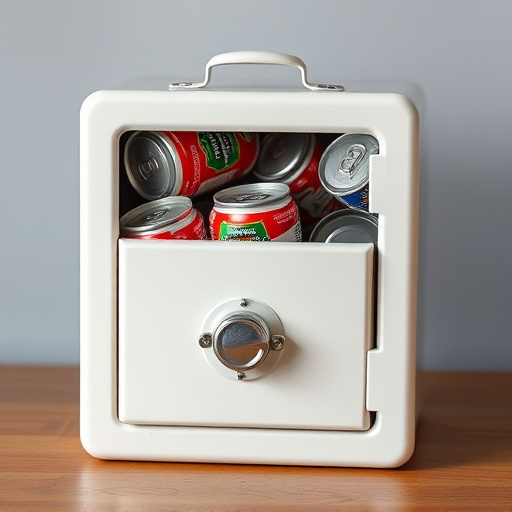Integrating secret compartments into everyday household items provides a unique and artistic approach to secure valuable possessions or sensitive documents. Artfully designed hidden spaces within items like bookcases, lamps, or decorative boxes offer discreet storage solutions, appealing to those seeking peace of mind and an aesthetic twist on safekeeping. However, this method involves risks such as item damage and requires skill to avoid detection, while ethical considerations encompass privacy boundaries and legal standards.
Uncover the intriguing world of hidden compartments disguised as everyday household goods. This innovative concept transforms regular items into secure safes, offering a unique solution for discreet storage. From bookshelves to kitchen cabinets, learn how creative design can mask secret spaces. Explore our step-by-step guide to constructing your own hidden compartment and discover the benefits, risks, and ethical considerations of this modern approach to security within everyday items.
- Unveiling the Concept: Why Hide a Compartment in Household Goods?
- Everyday Items as Disguised Safes: Creative Design Possibilities
- Constructing and Hiding Your Secret Compartment: A Step-by-Step Guide
- Benefits, Risks, and Ethical Considerations of Hidden Compartments
Unveiling the Concept: Why Hide a Compartment in Household Goods?
In the realm of creative security solutions, the concept of a hidden compartment within everyday household items is a fascinating one. The idea behind this innovative approach is to seamlessly integrate secrecy and safety into our daily lives, offering a unique way to store valuable items or sensitive documents. By hiding a secret compartment within seemingly innocuous household goods, individuals can ensure their possessions remain secure and out of sight.
Whether it’s a beautifully crafted bookcase that doubles as a safe haven for precious jewelry or a cleverly designed fake food container holding crucial papers, these hidden compartments provide an artful solution. The allure lies in the ability to disguise security measures within regular household items, making them virtually invisible to prying eyes. This innovative practice has gained traction among those seeking discreet storage options, offering both peace of mind and a creative twist on traditional safekeeping methods.
Everyday Items as Disguised Safes: Creative Design Possibilities
In the realm of security and discretion, everyday household items can be transformed into ingenious hiding places for secret compartments. The creative potential is vast when it comes to designing safes that seamlessly blend into common objects found in any home. For instance, a beautifully crafted wooden bookcase could conceal a hidden space behind its shelves, perfect for storing valuable documents or precious items. Similarly, an antique lamp might house a compartment accessible only by a cleverly placed mechanism, allowing owners to hide small treasures or confidential papers.
These disguised safes offer a unique approach to home security, providing a subtle and artistic solution for those seeking to protect their belongings. By incorporating secret compartments into everyday household items, homeowners can add an extra layer of discretion and safety, ensuring that their most cherished possessions remain secure and hidden from prying eyes.
Constructing and Hiding Your Secret Compartment: A Step-by-Step Guide
Constructing a secret compartment within everyday household items is an intriguing way to create a secure hiding spot for valuables. The key to success lies in creativity and careful planning. Start by selecting an everyday item that can be modified, such as a decorative box or even a fake plant pot. Drilling a hidden cavity into the item, ensuring it blends seamlessly with its intended purpose, is the next step. This process requires precision and the right tools to create a space large enough for your desired contents without raising suspicion.
Once the compartment is ready, use materials like thin wood or plastic to line the interior, providing a subtle yet effective barrier. Consider camo tape or camouflage paint to further disguise the modification, making it less obvious to prying eyes. With these simple steps, you can transform ordinary household items into secure vaults, offering peace of mind and a clever solution for hiding your secrets safely.
Benefits, Risks, and Ethical Considerations of Hidden Compartments
Hidden compartments within everyday household items offer a unique solution for securing valuable or sensitive materials, but they also come with certain risks and ethical implications. One of the primary benefits is enhanced security, allowing individuals to store important documents, cash, or personal belongings discreetly and safely within seemingly ordinary objects like books, dolls, or even kitchen appliances. This innovative approach can be particularly appealing to those seeking to protect their possessions from theft or unauthorized access, especially in situations where traditional safes might not be feasible or conspicuous.
However, the use of secret compartments also presents potential drawbacks. There’s a risk of damaging the host item through installation or removal, and the process of crafting these hidden spaces requires skill and precision to ensure they remain undetected. Furthermore, ethical considerations arise when discussing the use of such devices, particularly regarding privacy and consent. It is essential to respect personal boundaries and ensure that any use of secret compartments adheres to legal and moral standards, especially in shared living spaces or public areas.
Incorporating a secret compartment into everyday household items offers a unique blend of practicality and discretion. As demonstrated, this concept is not only feasible but also highly creative, allowing individuals to safeguard valuable items within seemingly innocuous objects. However, it’s essential to balance the benefits with ethical considerations and risks involved. Responsible use of hidden compartments in household goods can enhance security while respecting privacy, making them a intriguing addition to modern homes.
